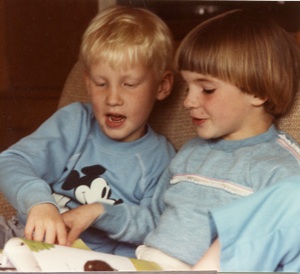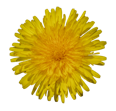distinguishing and naming


a path of expansion
The “implicit sign” that arises through a consensual coordination of coordinations acts to coordinate the behaviour, it is primitive language; but it is just itself, just does that. It has no name. To have a name one has to apply another level of coordination. One has to step back from the happening and realize that the sign is a sign, so it is a “thing” that can be named. Once the competence and the process of naming has arisen, languaging can proceed relatively fast as expanding possibilities.
I think of it having evolved much like the long string of the evolution of life. It takes a very long time for the basics to be established, and then, when the conditions are just right (as for our ancestors) then naming can arise, be conserved through the learning of the children, and expand. Now we live immersed in language, and those initial steps are as hard to discern as the early history of the evolution of life. We can, of course, see how language is learned by babies - but these beings already have a languaging brain and are growing in a languaging niche. To think back to how it was before that is, to say the least, fascinating!
discerning naming
When we teach a dog many words, are they learning to distinguish and name? I have watched, and wondered for a while, and have come to the conclusion that “no” they just learn a very wide repertoire of coordinations of coordinations.
The appended snippet shows some of the many coordinations that one particular dog participates in, and it also reveals some of the clues whereby I have concluded that it takes a human being living immersed in a languaging niche to develop this recursion of language.
Note that this does not deny that other animals, such as whales, dolphins, wolves have language. I think they do, they do coordinate their coordinations. They just don’t name.
And I sometimes wonder, also, if in the long term all the possibilities that have arisen from naming has really been a good thing for us; much as I enjoy all that comes with it. Distinctions and names, as you will see in the next unit, both reveal and obscure.
distinguishing and naming arise together
I find it a bit of mental calisthenics to see the difference between that particular discriminative act when we distinguish a recurrent configuration as a “something” and endowing it with a name (which of course does not have to be oral). The two arise together. I find it easiest to think of the name as the result of having made the distinction.
Prior to naming there is discrimination, and there is coordination of coordinations, but a name takes on a different dynamic. It can be learned, and it can be conserved as a “thing” within a culture. Indeed, we easily conflate the name of a thing with the thing!

observer and observing
Again we come to a subtle point, but one well worth while pondering especially in the context of being engaged in the SelfDesign praxis of “Observing for Learning.” What are we doing when we are observing? Are we conflating the process, as described in the video, with the name we have applied to it?
It may be difficult to remain in the generative dynamic when a shorthand substitution presents itself. Yet, as I know from conversations with this “Alpha Cohort” you are very aware of the danger of formalizing any process or model or framework.
a gift of effortless action
(considering the difference between energy or intensity and “effort”)
